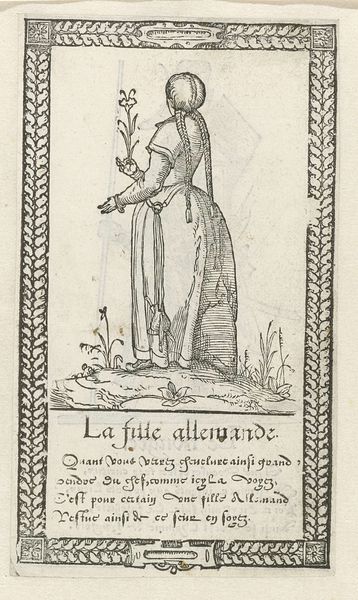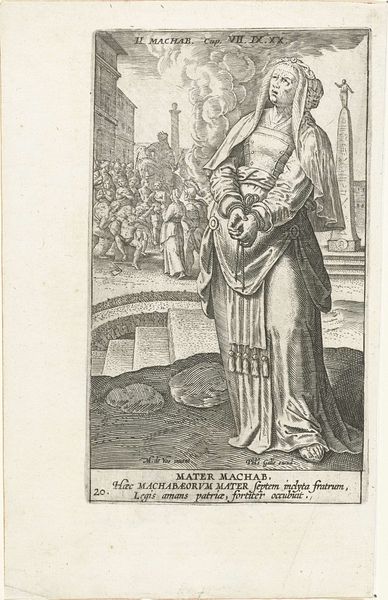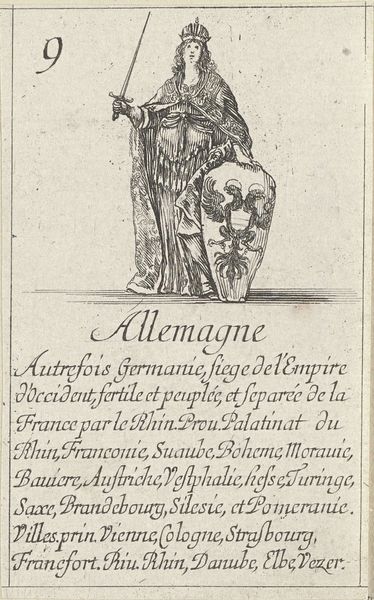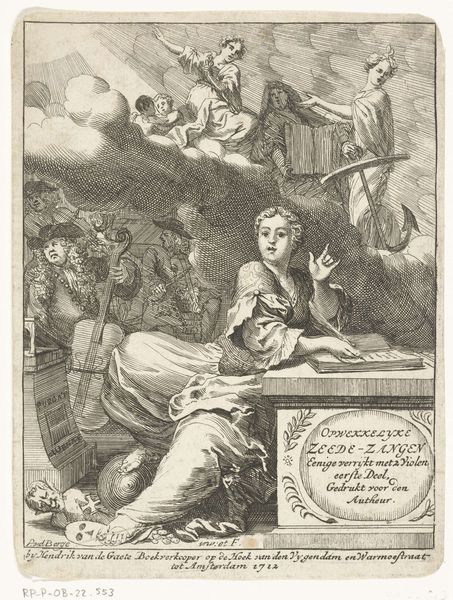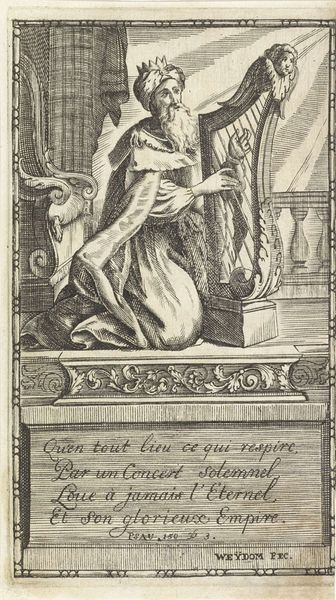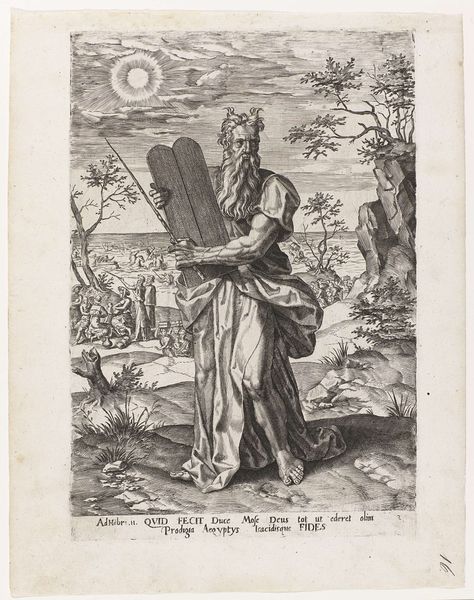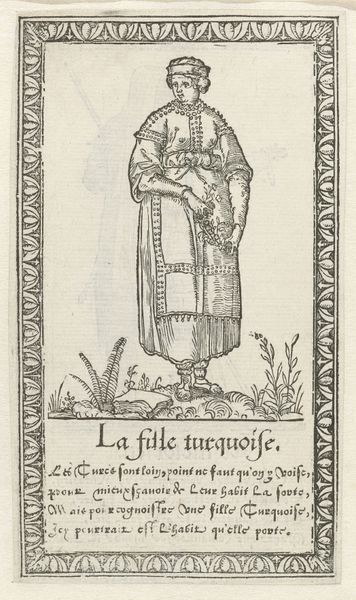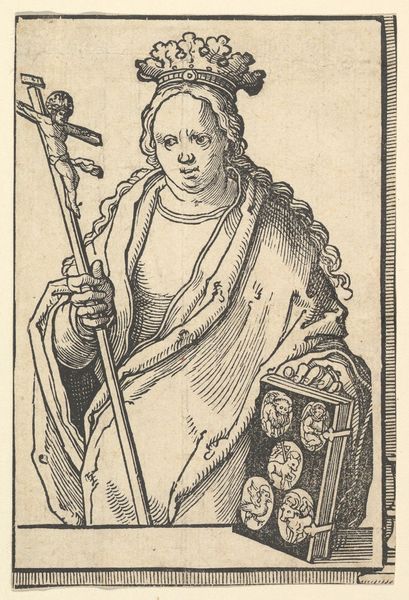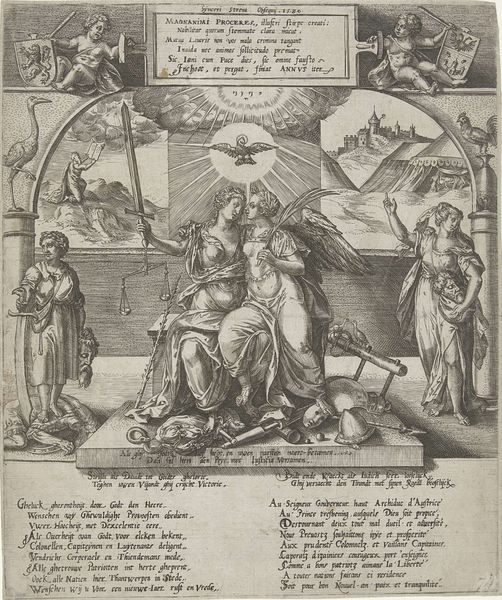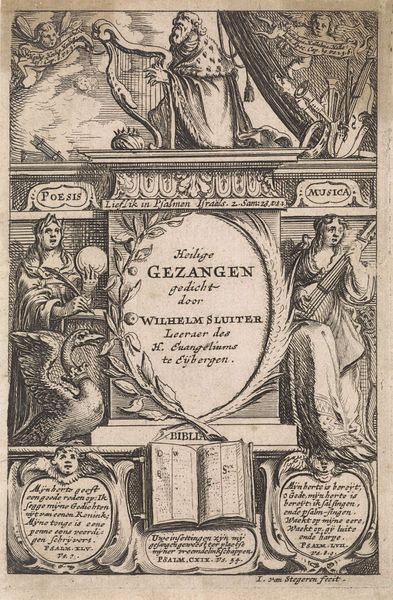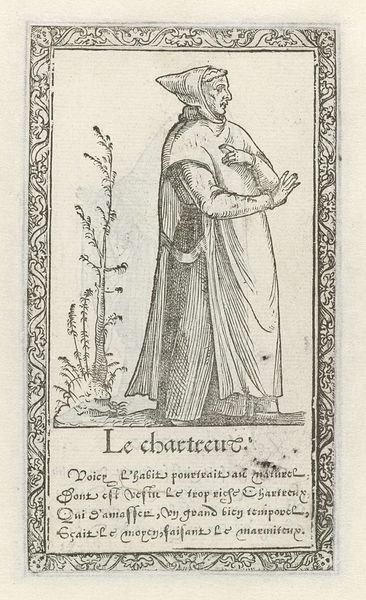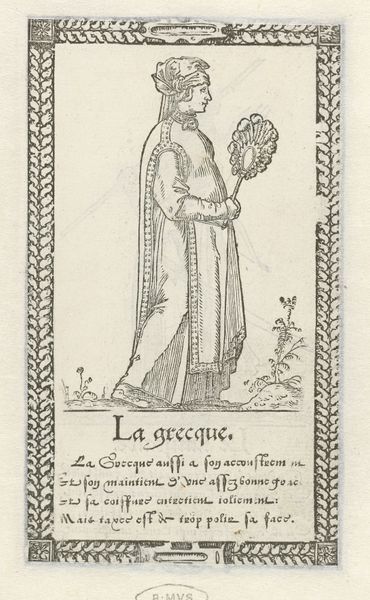
Overvloed met schoot vol bloemen en korenschoof en beeld van Mercurius 1642
0:00
0:00
print, engraving
#
allegory
#
baroque
# print
#
figuration
#
history-painting
#
engraving
Dimensions: height 92 mm, width 56 mm
Copyright: Rijks Museum: Open Domain
Curator: This engraving, entitled "Overvloed met schoot vol bloemen en korenschoof en beeld van Mercurius"—or "Abundance with lap full of flowers and wheat sheaf and statue of Mercury"—was created by Cornelis van Dalen I in 1642. It's currently held at the Rijksmuseum. What are your first thoughts? Editor: My initial impression is one of contained, deliberate energy. The sharp lines of the engraving create a sense of controlled dynamism. There's a very clear structure to the composition, almost architectural in its organization of figure and text. Curator: I’m interested in how this image served its original function. Given its production, it may be a bookplate meant to highlight mercantile productivity with the tools readily at hand. We have, notably, Mercury with the cornucopia filled to bursting with both grain and flowers – a blurring of what could be gained through effort, on the one hand, and the chance benefits of trade with nature. Editor: It's fascinating to see how van Dalen employs the visual language of allegory. Note the confident, regal pose of the central figure, abundance personified. The weight and texture he suggests through such careful line work—it emphasizes a calculated grandeur. The very lines on the body, as well as the weight of her garments suggest much. It all guides your eye through symbolic terrain. Curator: Absolutely, but who had access to this type of print at that time? These books wouldn't be easily disseminated, suggesting this specific iconography wasn't a common one amongst Dutch citizenry. And I must push back against notions of “grandeur." It would be interesting to track this kind of emblem across material culture, charting changes in popular perceptions of commerce, wealth, and the use of human labor. Editor: It brings out questions of audience and intent, doesn’t it? But, the tension created by contrasting textures and stark light gives it, for me, such striking visual impact. It compels you to consider each component’s place in the grand scheme. Curator: It is useful, in thinking about a moment in Dutch history that prized mercantilism, to consider the book not as a product of aesthetic value, but one which is directly representative of class power. Editor: Looking closely at the way van Dalen used a symbolic language so steeped in Baroque dynamism opens up exciting aesthetic, but also theoretical terrain for further exploration. Curator: I agree. Examining this from the viewpoint of printing methods of this period offers a new lens for studying 17th century Dutch economics, as well as trade policies that may not be apparent on initial readings.
Comments
No comments
Be the first to comment and join the conversation on the ultimate creative platform.
